Performing Yuánfèn: An Exploration of Untranslatable Words in the Lacunae Project
Abstract
1. Introduction
2. Untranslatability and Untranslatable Words
3. Methodology
4. Theoretical Framework: Dramatic Tension and Intercultural Engagement
- The Task—the problem of the tasks which the characters must complete;
- Dilemma—the problem of choosing between two courses of action;
- Relationships—the problem of relationships between characters;
- Surprise—the problem of the characters not knowing what lies ahead;
- Mystery—the problem of the characters not knowing what it all means.
5. Performing Yuánfèn 缘分
5.1. Philosophical Lens: The Concept of Yuánfèn 缘分 in Chinese Culture
5.2. Pedagogical Lens: The Yuánfèn 缘分 Workshop
- Unexpected Encounters at the Airport
- 2.
- Embodied Loop
- 3.
- Random Encounters
- What is the person’s name?
- How old is the person?
- Where are they from?
- What is their profession?
- What is their dream?
- What is their secret?
5.3. Research Lens: Investigating Yuánfèn 缘分
Here, the writer’s comment denotes having experienced the untranslatable word in terms of ‘values’ that transcend a cultural system’s specificity and cut across the universal. To the left of that comment, another participant had written:“Universal values that become a common language”.
“Stepping back to the magic of
chance/fate/destiny
In this comment, the author used a spatial metaphor (stepping back) to signify that, through the medium of drama, they were able to gain some distance from an everyday routine and contemplate life from a more meaningful perspective. With a direct arrow stemming from that comment, another participant wrote a response:at play in your own life”.
In this case, the reference to drama is more obvious, framing an actual sequence in the workshop and reframing the philosophical experience (change/fate/destiny) with solid links to a pedagogical activity—the Embodied Loop. Another thread reads:“Yes! Could use your loop idea to do that, too”.
“That space in time where everything can happen,
But it’s supposed to happen
To which another participant added:(everyone carries their stories in that encounter)”.
“That space between—a moment of
POTENTIAL
where anything
Here, the two participants feed off each other to delineate yuánfèn 缘分 as a ‘space in time’ that breeds possibilities. On the one hand, the first part of the sentence, “it’s supposed to happen”, subscribes to a Daoist philosophy of yuánfèn 缘分, whereby one must accept destiny and the fact that ‘random encounters’, as the sequence was named, must be seen as fated to come into our lives as a natural flow (Liang et al. 2017). Yet, the second part of the comment (“everyone carries their stories in that encounter”) may be interpreted through a Buddhist lens, as an individual’s story and their encounter with another is seen as the result of previous actions in past lives. On the other hand, the second comment, “the space between… where anything could happen”, appears to be written from a Buddhist perspective where fate is not predetermined. A final comment directly connected to this untranslatable word reads:could happen”.
Here, it is worth revisiting the photographic data documenting the workshop and applying a different filter, which can perhaps enable us to distance ourselves from the operational aspects of the workshop, as seen in Section 5.2, to consider it in a different light. To this purpose, Figure 7 is a composition of four key moments of practice, as documented above.“Ephemeral moments that shape our lives”.
6. Discussion
7. Conclusions
Don’t regret that you meet each other too late,
but do be precious about your yuan, because in
this life, any yuan is not easy to get. Only
those who know enough to cherish yuan will
realize that even a small encounter might have
been prepared for thousands of years. When
yuan is mature, try your best to make it flower
with the most beautiful blossoms. Whether the
flower blossoms or dies, if you try your best,
you will have no regrets
Author Contributions
Funding
Data Availability Statement
Conflicts of Interest
| 1 | All photos included in this article have been reproduced with permission from the persons being photographed. |
References
- Barone, Tom, and Elliot W. Eisner. 2012. Arts Based Research. Newcastle upon Tyne: Sage. [Google Scholar] [CrossRef]
- Belliveau, George, and Graham W. Lea, eds. 2016. Research Based Theatre: An Artistic Methodology. Bristol: Intellect Books. [Google Scholar]
- Belliveau, George, and Jennica Nichols. 2017. Audience responses to Contact! Unload: A Canadian research-based play about returning military veterans. Cogent Arts & Humanities 4: 1351704. [Google Scholar]
- Boal, Augusto. 1994. The Rainbow of Desire: The Boal Method of Theatre and Therapy. Translated by Andrian Jackson. New York: Routledge. [Google Scholar] [CrossRef]
- Bolton, Gavin, and Dorothy Heathcote. 1998. Teaching culture through drama. In Language Learning in Intercultural Perspective. Edited by Michael Byram and Michael Fleming. Cambridge: Cambridge University Press, pp. 158–77. [Google Scholar]
- Bundy, Penny. 2004. Dramatic tension: Towards an understanding of intimacy. Youth Theatre Journal 18: 17–29. [Google Scholar] [CrossRef]
- Camus, Albert. 1965. The Myth of Sisyphus and Other Essays. London: H. Hamilton. [Google Scholar]
- Carabaña, Carlos, and Mar Abad. 2016. En Galicia Hay Más de 70 Palabras Para Llamar a la Lluvia. Available online: https://youtu.be/X_LHlz-1W80 (accessed on 18 December 2022).
- Cassin, Barbara, Emily Apter, Jacques Lezra, and Michael Wood. 2014. Dictionary of Untranslatables: A Philosophical Lexicon. Princeton: Princeton University Press, vol. 35. [Google Scholar] [CrossRef]
- Chang, Hui C., and Richard G. Holt. 1991. The concept of Yuan and Chinese interpersonal relationship. In Cross-Culture Interpersonal Communication. Edited by Stella Ting-Toomey and Felipe Korzenny. Newbury Park: Sage, pp. 28–57. [Google Scholar]
- Chen, Ling. 2009. Romantic relationship and “Yuan”: A preliminary study of Chinese in Hong Kong. Communication Research Reports 26: 253–58. [Google Scholar] [CrossRef][Green Version]
- Cox, Susan, Marilys Guillemin, Jennica Nichols, and Monica Prendergast. 2023. Ethics in research-based theater: Why stories matter. Qualitative Inquiry 29: 247–56. [Google Scholar] [CrossRef]
- Crutchfield, John, and Manfred Schewe, eds. 2017. Going Performative in Intercultural Education: International Contexts, Theoretical Perspectives and Models of Practice. Bristol: Multilingual Matters, vol. 31. [Google Scholar]
- Eisner, Elliot W. 2002. The Arts and the Creation of Mind. New Haven: Yale University Press. [Google Scholar]
- Fleming, Mike. 2016. Exploring the concept of performative teaching and learning. In Performative Teaching, Learning, Research—Performatives Lehren, Lernen, Forschen. Edited by Susanne Even and Manfred Schewe. Berlin: Schibri Verlag, pp. 189–205. [Google Scholar]
- Glynn, Dominic, and James Hadley. 2021. Theorising (un)performability and (un) translatability. Perspectives 29: 20–32. [Google Scholar] [CrossRef]
- Goodwin, Robin, and Catherine S.-K. Tang. 1996. Chinese personal relationships. In The Handbook of Chinese Psychology. Edited by Michael Harris Bond. Oxford: Oxford University Press, pp. 294–308. [Google Scholar]
- Greaves, Lucy. 2014. Is Any Word Untranslatable? The Guardian. Available online: www.theguardian.com/books/2014/jan/31/word-untranslatable-lucygreaves (accessed on 20 July 2023).
- Harbon, Lesley, and Robin Moloney. 2015. Intercultural and multicultural awkward companions: The case of in schools in New South Wales, Australia. In Making the Most of Intercultural Education. Edited by Heidi Layne, Virginie Trémion and Fred Dervin. Newcastle upon Tyne: Cambridge Scholars Publishing, pp. 15–34. [Google Scholar]
- Heger, Isabel. 2015. The Meaning and Functions of the Concept of Yuanfen 缘分 in Contemporary China: A Qualitative Study with Students from East China Normal University. Vienna Journal of East Asian Studies 7: 129–63. [Google Scholar] [CrossRef]
- Hsu, Hsin-Ping, and Kuo-Kwang Hwang. 2016. Serendipity in Relationship: A Tentative Theory of the Cognitive Process of Yuanfen and Its Psychological Constructs in Chinese Cultural Societies. Frontiers in Psychology 7: 282. [Google Scholar] [CrossRef] [PubMed]
- Kabat-Zinn, Jon. 2003. Mindfulness-based interventions in context: Past, present, and future. Clinical Psychology: Science and Practice 10: 144–56. [Google Scholar] [CrossRef]
- Lam, Wing Y. 2012. Belief of yuan Served as a Defense Mechanism and the Affection on Coping in Chinese. Bachelor’s thesis, The University of Hong Kong, Hong Kong, China. [Google Scholar] [CrossRef]
- Large, Duncan, Motoko Akashi, Wanda Józwikowska, and Emily Rose. 2018. Untranslatability: Interdisciplinary Perspectives, 1st ed. London: Routledge. [Google Scholar] [CrossRef]
- Lea, Graham W., and George Belliveau. 2020. Research-based theatre as educational research innovation. In Encyclopedia of Educational Innovation. Edited by Michael A. Peters and Richard Heraud. Singapore: Springer, pp. 1–7. [Google Scholar] [CrossRef]
- Lee, Hsing-Ming, and Mi-Tao Chen. 2006. The relationship among practical intelligence, yuarn-fen beliefs, mental health and job performance for the preschool teachers. Chinese Journal of Psychology 48: 183–202. [Google Scholar] [CrossRef]
- Liang, Xin, Meihui Dong, Yanmin Xiu, Zhaohang Wei, and Chao-Hsü Lee. 2017. “Yuan” in the Perspective of Cultural Psychology—Exploration of Source, Structure and Characteristics. Advances in Psychology 7: 279–84. [Google Scholar] [CrossRef]
- Lomas, Tim. 2016. Towards a positive cross-cultural lexicography: Enriching our emotional landscape through 216 “untranslatable” words pertaining to wellbeing. The Journal of Positive Psychology 11: 546–58. [Google Scholar] [CrossRef]
- Lomas, Tim. 2018. Experiential cartography and the significance of “untranslatable” words. Theory & Psychology 28: 476–95. [Google Scholar] [CrossRef]
- Lyer, Anjana. 2014. Found in translation. Available online: https://www.behance.net/gallery/9633585/Found-In-Translation (accessed on 28 August 2023).
- Magan, Manchan. 2020. Thirty-Two Words for Field: Lost Words of the Irish Landscape. Dublin: Gill Books. [Google Scholar]
- Mak, Yee-Lum. 2016. Other Wordly: Words Both Strange and Lovely from Around the World. San Francisco: Chronicle Books. [Google Scholar]
- Malinowski, Bronislaw. 2001. Scientific Theory of Culture and Other Essays. Selected Works by Bronislaw Malinowski. London: Routledge, vol. 9. First published 1935. [Google Scholar]
- Mann, Ka Fai Stephen, and Viviana Cheng. 2012. Effects of beliefs in yuan on coping and psychological well-being among Hong Kong Chinese. Asia Pacific Journal of Counselling and Psychotherapy 3: 175–89. [Google Scholar] [CrossRef]
- Niwano, Nikkyo. 1980. Buddhism for Today. New York: John Weatherhill. [Google Scholar]
- O’Neill, Cecily. 1995. Drama Worlds: A Framework for Process Drama. Portsmouth: Heinemann. [Google Scholar]
- O’Toole, John. 1992. The Process of Drama. Negotiating Art and Meaning. London: Routledge. [Google Scholar] [CrossRef]
- O’Toole, John, and Brad Haseman. 2017. Dramawise Reimagined: Learning to Manage the Elements of Drama. Sydney: Currency Press. [Google Scholar]
- Overmyer, Daniel L., Jacques Gernet, and Franciscus Verellen. 1995. Buddhism in Chinese History: An Economic History from the 5th to the 10th Centuries. New York: Columbia University Press. [Google Scholar] [CrossRef]
- Pheasant, Patrick. 2015. The Epiphany in Process Drama and Language Learning. p-e-r-f-o-r-m-a-n-c-e 2: 1–12. [Google Scholar]
- Piazzoli, Erika. 2018. Embodying Language in Action: The Artistry of Process Drama in Second Language Education. Dublin: Palgrave Macmillan. [Google Scholar] [CrossRef]
- Piazzoli, Erika. 2022. Drama in Second Language Education: The Elements of Drama in an Intercultural Perspective. In The Routledge Companion to Drama in Education. Edited by Mary McAvoy and Peter O’Connor. London: Routledge, pp. 391–407. [Google Scholar] [CrossRef]
- Ryle, Gilbert. 1949. The Concept of Mind. London: Hutchinson. [Google Scholar]
- Sanders, Ella Frances. 2016. Lost in Translation: An Illustrated Compendium of Untranslatable Words. Sebastopol: Square Peg. [Google Scholar]
- Scheibe, Susanne, Alexandra M. Freun, and Paul B. Baltes. 2007. Toward a developmental psychology of Sehnsucht (life longings): The optimal (utopian) life. Developmental Psychology 43: 778–95. [Google Scholar] [CrossRef] [PubMed]
- Shigematsu, Tetsuro, Chris Cook, George Belliveau, and Graham W. Lea. 2021. Research-Based Theatre across Disciplines: A Relational Approach to Inquiry. Applied Theatre Research 9: 55–72. [Google Scholar] [CrossRef]
- Shigematsu, Tetsuro, Graham W. Lea, Christina Cook, and George Belliveau. 2022. A Spotlight on Research-based Theatre. LEARNing Landscapes Journal 15: 349–65. [Google Scholar] [CrossRef]
- Wagner, Betty Jane. 1976. Dorothy Heathcote: Drama as a Learning Medium. Philadelphia: National Education Association. [Google Scholar]
- Wright, Arthur F. 1971. Buddhism in Chinese History. Stanford: Stanford University Press. [Google Scholar] [CrossRef]
- Xu, Hsin-Ping. 2012. Fate operation and psychological adaptation process in Chinese relationship interaction. Native Psychology Research 37: 57–97. [Google Scholar]
- Zürcher, Erik. 1972. The Buddhist Conquest of China. Leiden: Brill. [Google Scholar] [CrossRef]

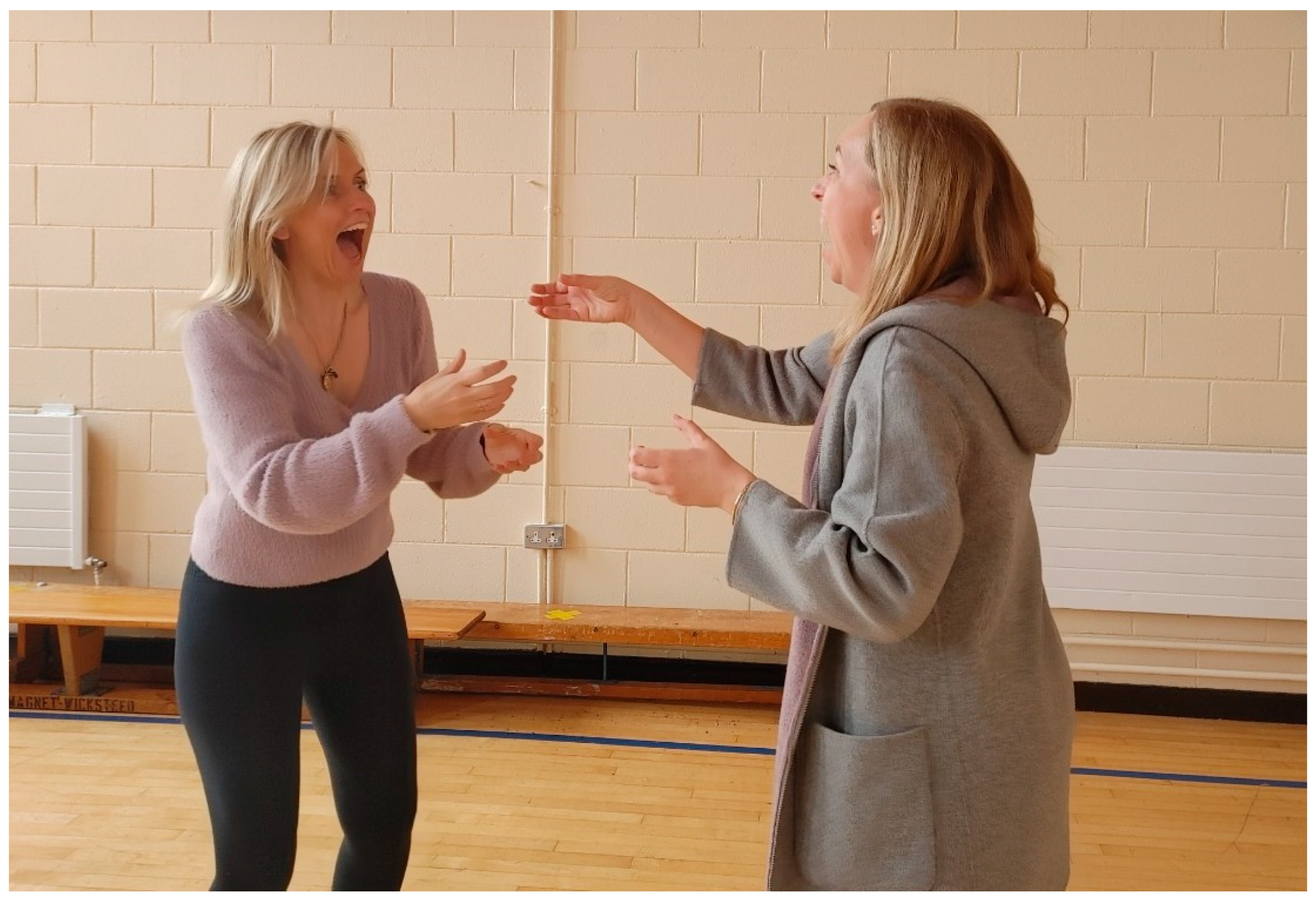
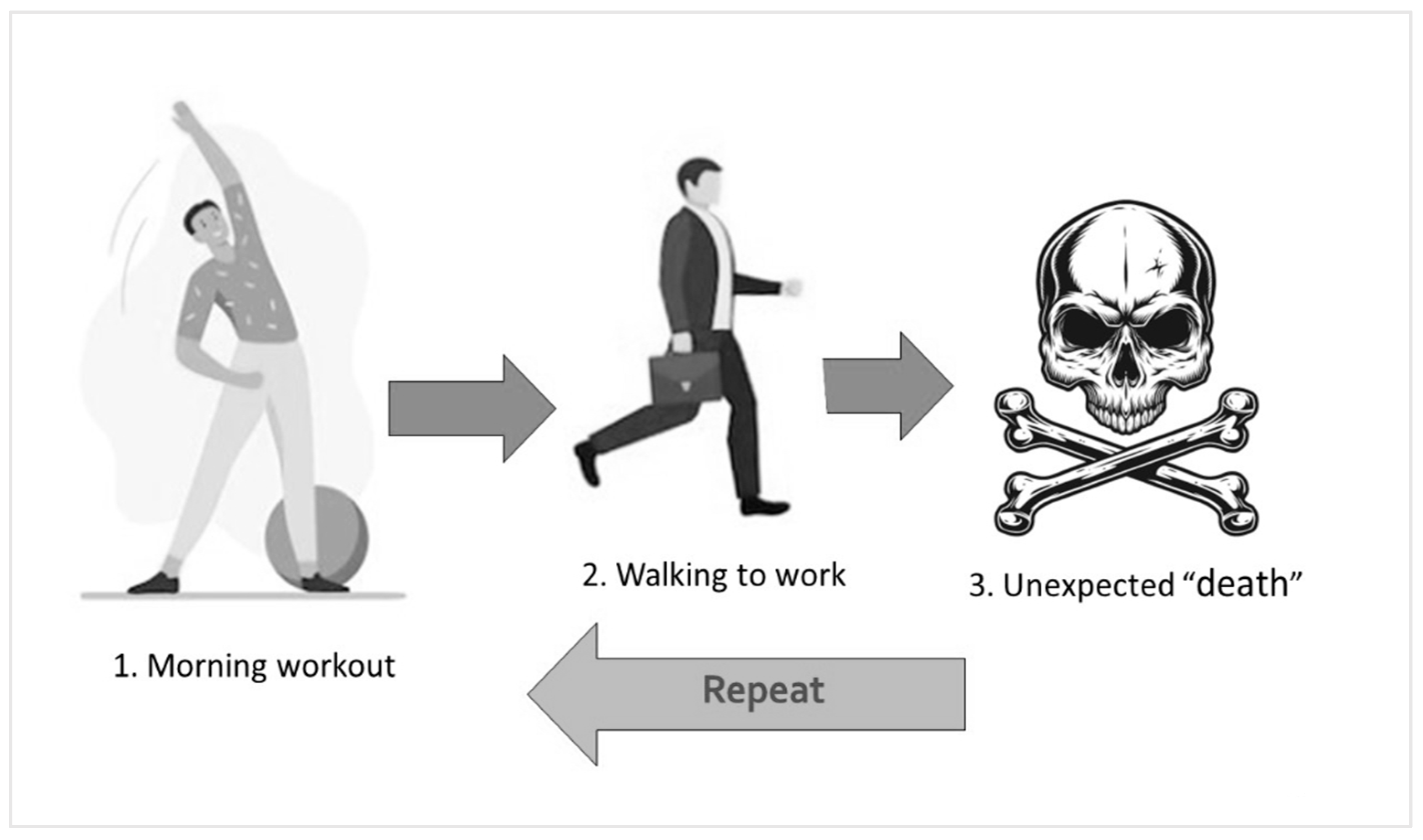
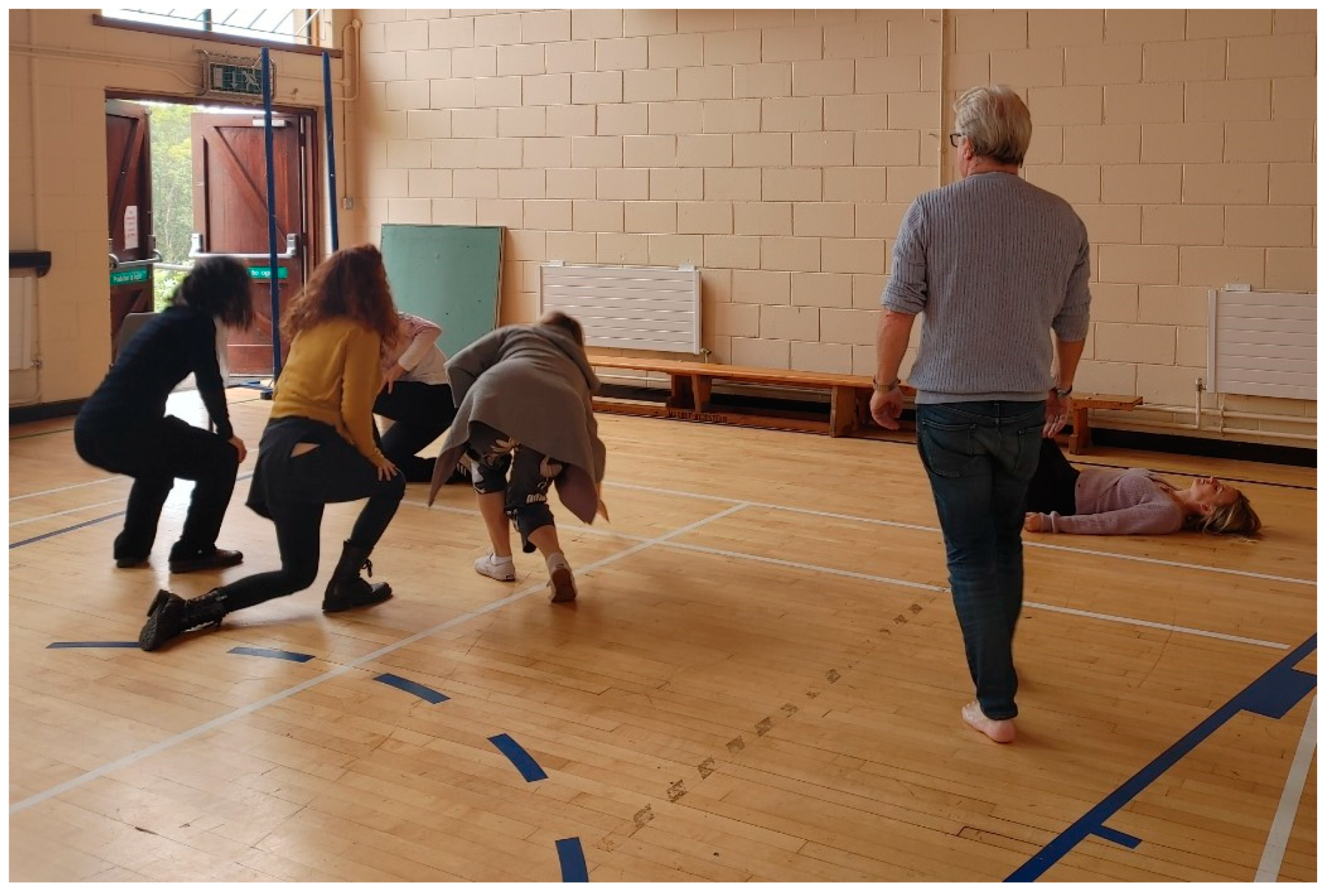
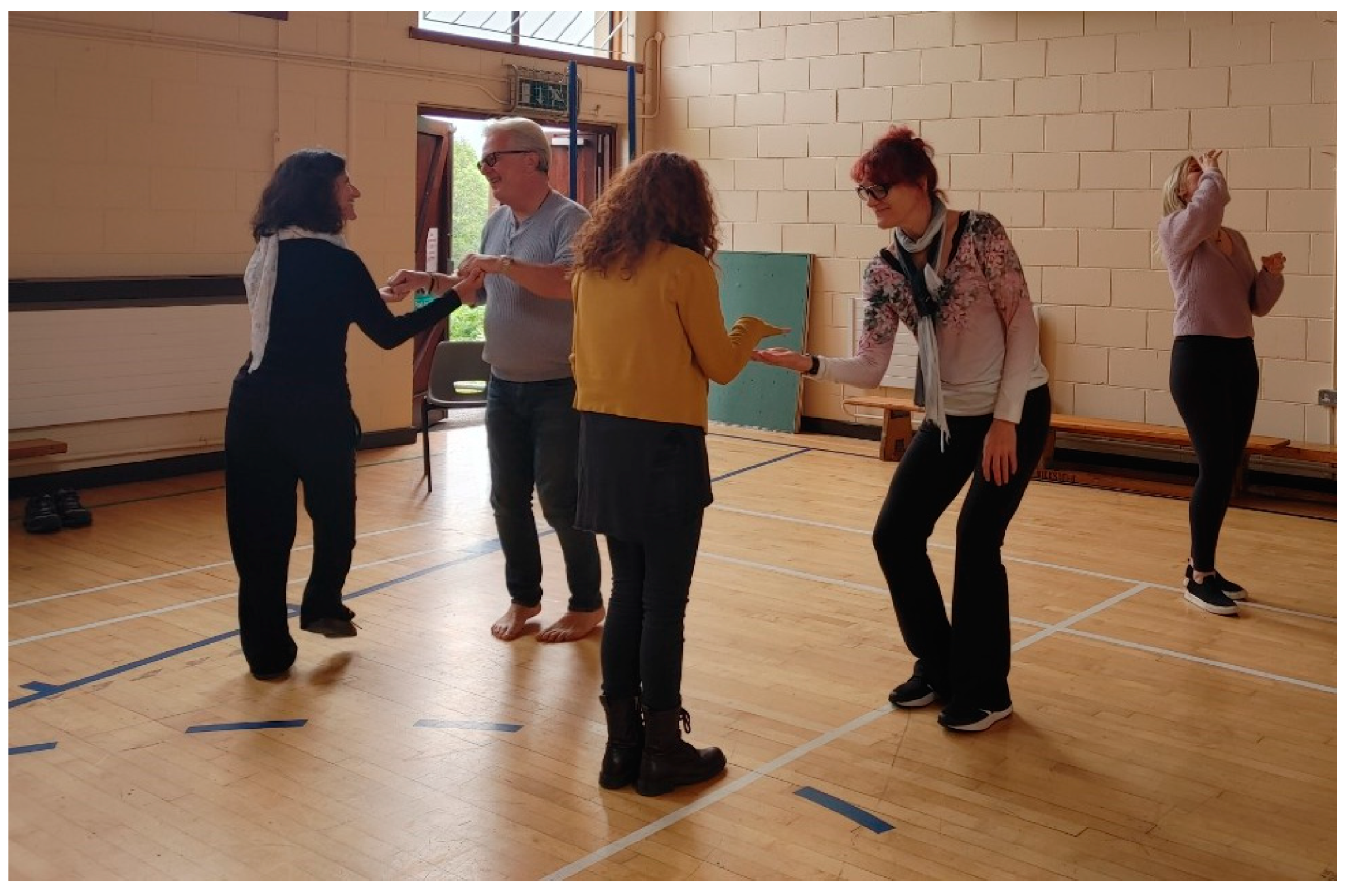
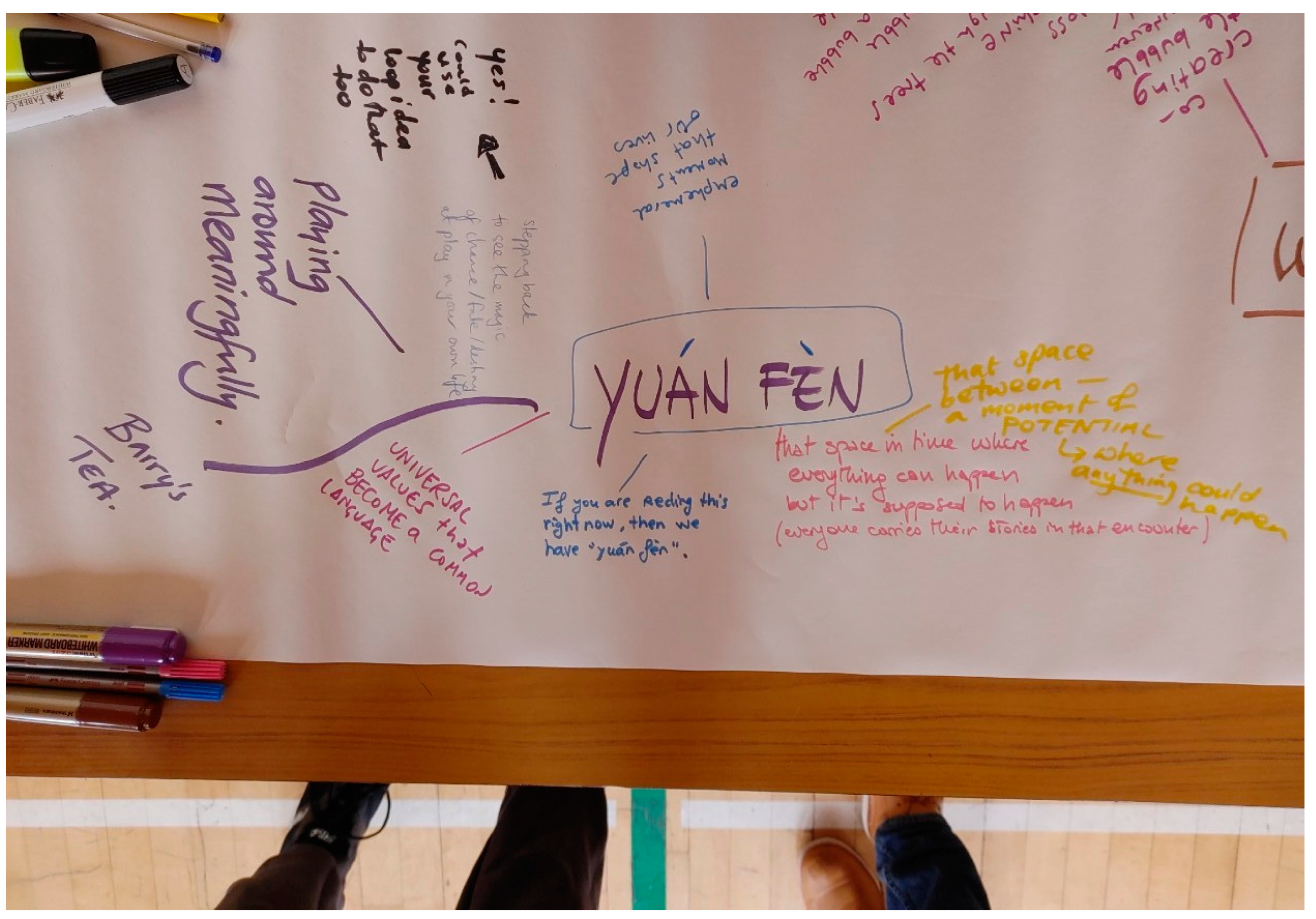
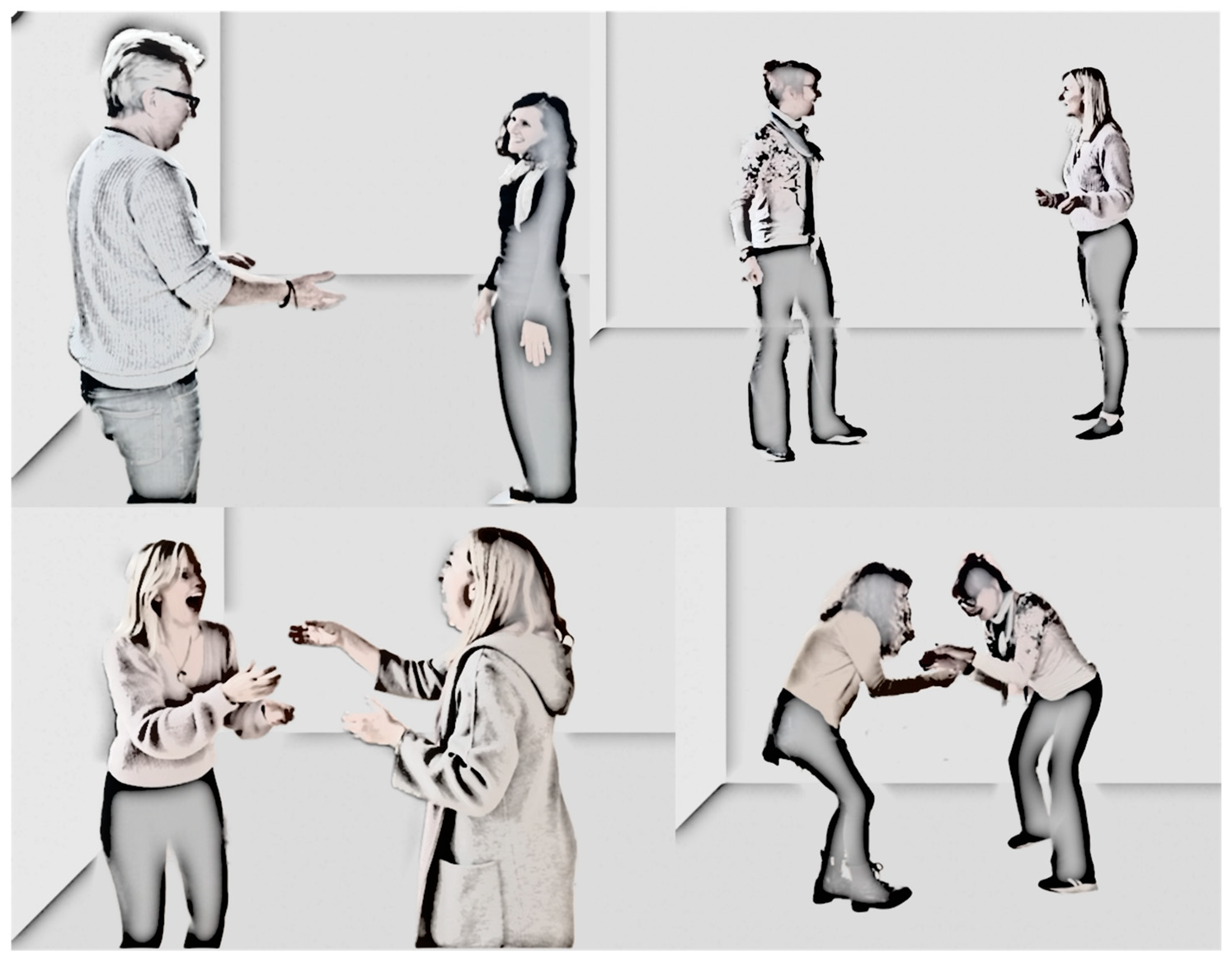
| Untranslatable Word | Culture/Region | Meaning |
|---|---|---|
| Aduantas | Gaelic/Ireland | Unease or anxiety caused by being somewhere new or surrounded by people you don’t know. |
| Cazzimma | Italian/Italy | Street savvy know-how of bending the rules with wicked trickery to achieve a goal. |
| Dépaysement | French/Francophonie | Feeling out of place, overwhelmed or confused, while in a country different from one’s own. |
| Fika | Swedish | Having a coffee break from work that involves a feast where people can relax and engage in non-work-related conversations. |
| Ichigo ichie | Japanese | The appreciation of the ephemeral character of any encounters with people, things, or events in life. |
| Morriña | Galician/Spain | The feeling of missing a person or a place. |
| Ramé | Balinese/Indonesia | Beautiful mess. A place simultaneously chaotic and joyful. |
| Talanoa | Fiji/New Zealand/The Pacific | An inclusive, generative, participatory form of dialogue through storytelling |
| Ubuntu | Zulu/South Africa | ‘Humanity’: The conviction that a common link of sharing binds humankind together. |
| Yuánfèn | Buddhism/Daoism/Confucianism/China | Serendipity in a relationship. |
| Name | Rosa |
| Age | 35 |
| Origin | Seville, Spain |
| Job | Maid for a wealthy family in NYC |
| Dream | To open her own bakery |
| Secret | She has had three unsuccessful love affairs. |
| Name | Alice |
| Age | 17 |
| Origin | Ohio, USA |
| Job | Dressmaker in Queens, NYC |
| Dream | To move to Paris |
| Secret | She is pregnant. |
| Yuánfèn | Description | Moments of Dramatic Tension Emerging |
|---|---|---|
| Sequence 1: Unexpected encounters at the airport | Role walk—at a busy airport. Improvisation—bump into an old friend and say goodbye. Repeat sequence. | The tension of surprise—unexpected interactions |
| Sequence 2: Embodied Loop | View music video. Mime two daily routines, followed by ‘unexpected death’. Repeat (with music going slow to fast). Interrupt loop—meet somebody, avoid death. | Tension of ‘unintended struggling with fate’ |
| Sequence 3: Random encounters | View music video. Improvisation (individual mime) Audience create the actor’s character. Repeat with another actor Two characters encounter each other in an improvised scene | Tension of the space-between Tension of relationships The tension of irony |
Disclaimer/Publisher’s Note: The statements, opinions and data contained in all publications are solely those of the individual author(s) and contributor(s) and not of MDPI and/or the editor(s). MDPI and/or the editor(s) disclaim responsibility for any injury to people or property resulting from any ideas, methods, instructions or products referred to in the content. |
© 2023 by the authors. Licensee MDPI, Basel, Switzerland. This article is an open access article distributed under the terms and conditions of the Creative Commons Attribution (CC BY) license (https://creativecommons.org/licenses/by/4.0/).
Share and Cite
Piazzoli, E.; Corderi Novoa, M.; Hogan, Z. Performing Yuánfèn: An Exploration of Untranslatable Words in the Lacunae Project. Arts 2024, 13, 2. https://doi.org/10.3390/arts13010002
Piazzoli E, Corderi Novoa M, Hogan Z. Performing Yuánfèn: An Exploration of Untranslatable Words in the Lacunae Project. Arts. 2024; 13(1):2. https://doi.org/10.3390/arts13010002
Chicago/Turabian StylePiazzoli, Erika, Modesto Corderi Novoa, and Zoe Hogan. 2024. "Performing Yuánfèn: An Exploration of Untranslatable Words in the Lacunae Project" Arts 13, no. 1: 2. https://doi.org/10.3390/arts13010002
APA StylePiazzoli, E., Corderi Novoa, M., & Hogan, Z. (2024). Performing Yuánfèn: An Exploration of Untranslatable Words in the Lacunae Project. Arts, 13(1), 2. https://doi.org/10.3390/arts13010002








